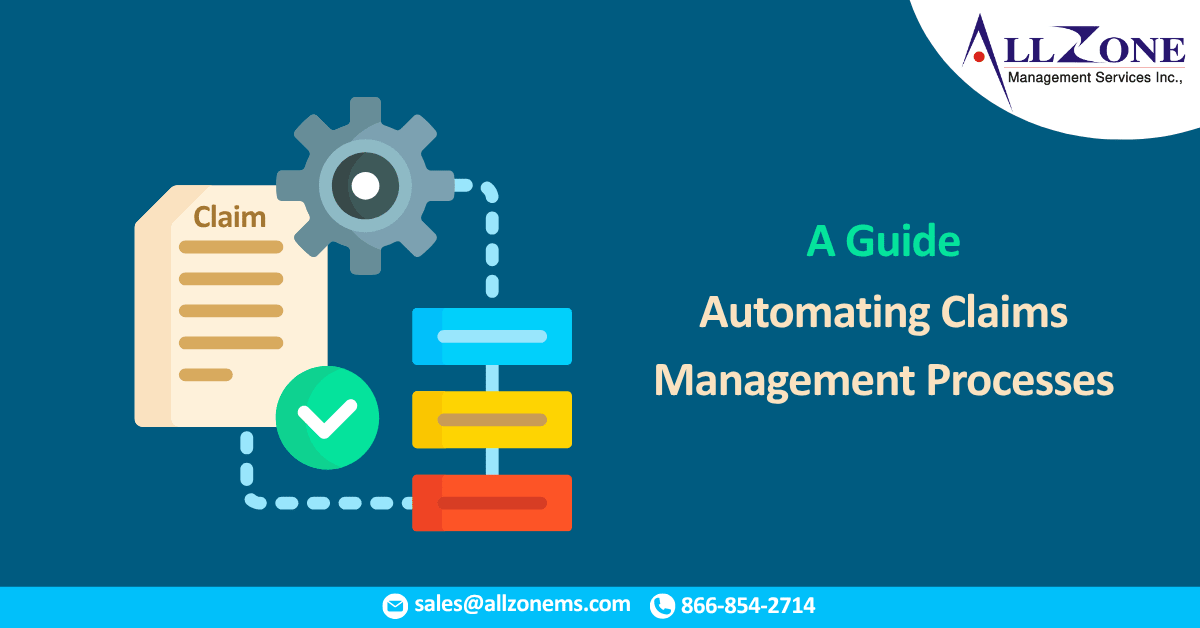In today’s complex healthcare environment, efficiency and cost control are critical for the financial health of providers, payers, and revenue cycle management (RCM) companies. One area that continues to experience inefficiencies is the claims management process—where errors, delays, and administrative overhead inflate operational costs. However, the rise of automation technologies is changing the game. Automating claims management processes not only accelerates workflows but also significantly reduces administrative expenses, improves accuracy, and enhances provider-patient experiences.
In this blog, we’ll explore how automating claims management process helps reduce costs, examine the technologies enabling this transformation, and offer tips for successful implementation.
Understanding Claims Management and Its Cost Burden
The claims management process encompasses several key steps:
- Patient eligibility verification
- Charge capture
- Coding
- Claims creation and submission
- Claims status tracking
- Denial management
- Payment posting and reconciliation
Each of these steps involves labor, compliance checks, and extensive documentation. According to the Council for Affordable Quality Healthcare (CAQH), manual claims processing can cost providers over $10 per claim, compared to under $2 for electronic transactions. Multiply that across thousands of claims monthly, and the potential for savings becomes obvious.
How Automation Reduces Costs in Claims Management
- Fewer Human Errors
Manual data entry is prone to errors—incorrect patient demographics, missing authorization numbers, or inaccurate codes. Automation tools minimize these mistakes by extracting and validating data through predefined rules and intelligent algorithms, reducing costly denials and rework.
- Faster Processing Times
Automated claims management software can process claims in seconds, compared to minutes or hours for manual workflows. This reduces days in accounts receivable (AR) and accelerates cash flow—a key metric for healthy revenue cycles.
- Lower Administrative Overhead
Staff who would otherwise handle repetitive claims tasks can be redirected to higher-value activities like patient care coordination, denial resolution, or analytics. This not only lowers direct labor costs but also boosts overall productivity.
- Improved Denial Management
Automation systems can flag common denial patterns and route them through auto-correction workflows or predictive analytics, helping prevent future issues. Fewer denials mean fewer appeals, which in turn reduces time and resources spent on follow-up.
- Reduced Paper and Printing Costs
Automated systems facilitate fully digital claims handling—minimizing the need for physical documents, postage, and printing supplies. Over time, this leads to significant savings, especially for high-volume providers.
Key Technologies Powering Automation in Claims Management
- Robotic Process Automation (RPA)
RPA mimics human actions such as copying data between systems or checking claim statuses on payer portals. It’s highly effective for repetitive tasks and can run 24/7 without fatigue.
- Artificial Intelligence (AI) and Machine Learning (ML)
AI algorithms can analyze large volumes of data to detect patterns, optimize coding accuracy, and predict claim outcomes. ML continually improves these predictions, helping organizations stay ahead of denial trends.
- Natural Language Processing (NLP)
NLP tools can interpret unstructured physician notes and documentation to suggest appropriate medical codes, improving first-pass claim acceptance rates.
- Cloud-Based Claims Management Software
These platforms offer integrated modules for eligibility checks, coding assistance, real-time claim edits, and dashboards—all accessible from anywhere. Cloud systems also support seamless updates and interoperability with EHRs and clearinghouses.
Challenges and Considerations
Despite the benefits, automation isn’t a silver bullet. Providers should be aware of common challenges:
- Upfront Investment: Automation tools may require significant initial costs for software, training, and integration.
- Interoperability Issues: Ensuring that automation platforms integrate seamlessly with existing EHRs and billing software can be technically complex.
- Change Management: Shifting to automated workflows requires staff training, clear communication, and culture adaptation to avoid resistance.
- Data Security: With automation often comes increased exposure to digital threats. Compliance with HIPAA and robust cybersecurity protocols are essential.
- Tips for a Successful Automation Rollout
- Start Small and Scale: Begin with one or two processes—like eligibility verification or claim status checks—before automating the entire workflow.
- Set Measurable Goals: Define KPIs such as reduced denials, lower AR days, or labor cost savings to track success.
- Engage Stakeholders: Include billing teams, IT staff, and clinical leadership in the planning and implementation phases.
- Choose the Right Vendor: Look for a technology partner with healthcare domain expertise, strong customer support, and a track record of successful automation deployments.
- Monitor and Optimize: Regularly audit automated processes for accuracy, compliance, and performance improvements.
The Future of Claims Automation
As technology matures, we can expect further breakthroughs in Automating Claims Management Processes. Predictive analytics may anticipate denials before submission. AI-driven chatbots could handle patient billing inquiries. Blockchain might eventually support secure, real-time claims validation between payers and providers.
Healthcare organizations that invest in automation today will be better positioned for long-term cost efficiency and operational agility tomorrow.
Conclusion
Automating Claims Management Processes is no longer optional—it’s a strategic imperative for healthcare organizations seeking to reduce costs, improve accuracy, and streamline operations. While the path to automation requires careful planning, the return on investment is clear: faster payments, fewer denials, and significantly lower administrative expenses. By embracing automation now, providers can future-proof their revenue cycles and focus more on delivering high-quality patient care.

